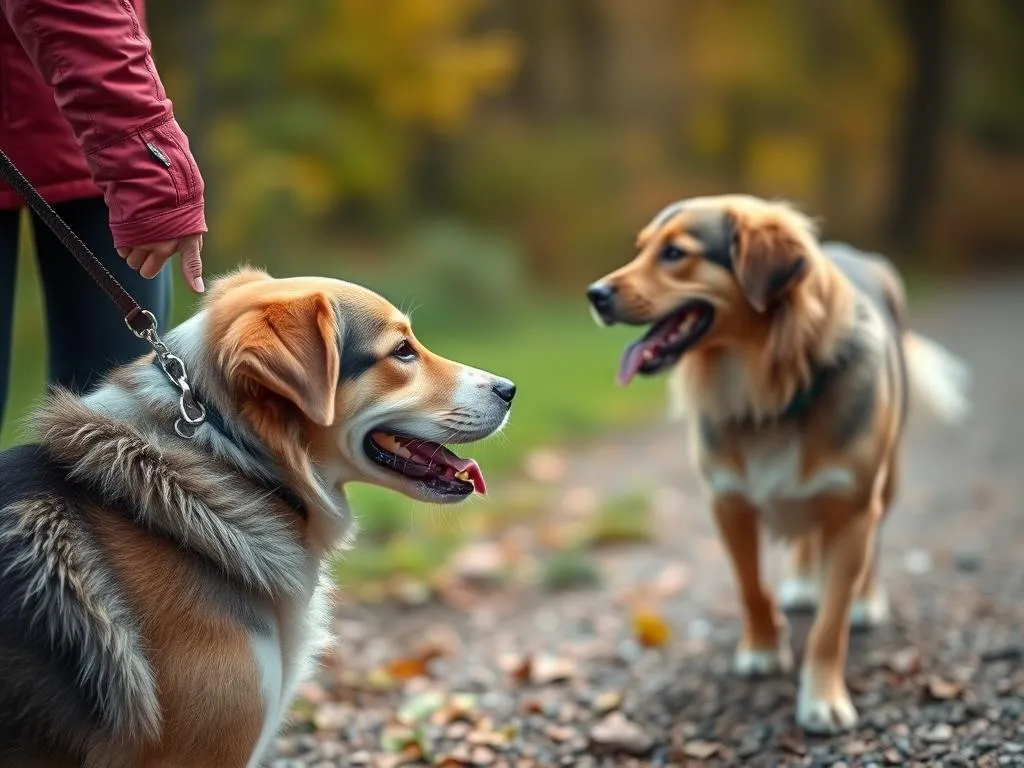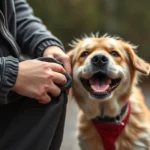
Introduction
Socialization is a critical aspect of dog ownership that directly influences a dog’s behavior and overall well-being. One of the most effective ways to socialize your furry friend is by introducing them to other dogs during walks. How to introduce your dog to other dogs on walks is a fundamental skill every dog owner should master, as it can lead to happier, more well-adjusted pets.
When dogs are socialized properly, they become more confident and less fearful in various situations. Additionally, positive interactions with other dogs can help curb behavioral issues and allow for a fulfilling play experience. In this article, we will explore the steps and considerations necessary for successful dog introductions during walks, providing you with actionable insights to help your dog thrive in social settings.
Understanding Dog Behavior
Canine Communication
To effectively introduce your dog to other dogs, it’s crucial to understand how dogs communicate. Dogs use a variety of body language signals to convey their feelings, intentions, and emotions. Key signals to observe include:
- Tail Position: A wagging tail can indicate excitement, but the position of the tail matters. A high, stiff tail may suggest dominance or aggression, while a low, relaxed tail can indicate submission or friendliness.
- Ears: Erect ears suggest alertness, while flattened ears can indicate fear or submission.
- Posture: A relaxed, loose body indicates comfort, whereas a tense, stiff posture may suggest anxiety or aggression.
Recognizing Aggression vs. Playfulness
Understanding the difference between aggressive behavior and playful interactions is essential when introducing your dog to others. Aggression often manifests as:
- Growling or barking
- Lunging or snapping
- Stiff body posture
In contrast, playful behavior typically includes:
- Play bows (front legs stretched out, rear in the air)
- Loose, wiggly movements
- Alternating between chasing and being chased
Recognizing these distinctions will help you gauge your dog’s temperament and the appropriateness of the introduction.
Preparing for a Successful Introduction
Assessing Your Dog’s Readiness
Before attempting to introduce your dog to others, assess their readiness. Look for signs that your dog is calm, confident, and open to new experiences, such as:
- Relaxed body language
- Interest in other dogs
- Previous positive experiences with dogs
If your dog shows signs of fear or aggression, it may be best to postpone introductions until you can work on building their confidence.
Choosing the Right Environment
The environment plays a significant role in the success of dog introductions. Select locations that are conducive to positive encounters, such as:
- Dog parks: Great for socialization, but ensure that your dog is comfortable in such settings.
- Quiet streets: Ideal for controlled introductions with a few dogs.
- Training classes: Structured environments where dogs can learn to interact positively.
Avoid busy or stressful areas that may overwhelm your dog and lead to negative experiences.
Equipment and Safety Measures
Having the right equipment is crucial for ensuring a safe introduction. Recommended gear includes:
- Leash: A sturdy, short leash allows for better control.
- Harness: Provides more control and comfort than a collar.
- Muzzle: Consider using a muzzle if your dog has a history of aggressive behavior.
Always have a backup plan in case the introduction does not go as expected, such as an escape route to remove your dog from a stressful situation.
The Step-by-Step Process of Introducing Dogs
Initial Approach
When approaching another dog, do so calmly and confidently. Maintain a moderate distance during the first encounter to allow both dogs to assess each other without feeling threatened. This distance helps prevent overwhelming either dog, especially if one is nervous.
Observing Body Language
As you approach, keenly observe the body language of both your dog and the other dog. Look for signs of stress or discomfort, such as:
- Tucked tails
- Avoiding eye contact
- Raised hackles
If either dog displays these signs, it may be best to retreat and try again later.
Gradual Introduction Techniques
Once both dogs appear comfortable, you can facilitate a gradual introduction. Here are some techniques to consider:
- Sniffing: Allow the dogs to sniff each other from a distance. This is a natural way for them to gather information.
- Positive Reinforcement: Use treats and praise to encourage calm behavior during the introduction. This helps create a positive association with meeting other dogs.
- Parallel Walking: Walk the dogs side by side at a safe distance. Gradually decrease the distance if both dogs remain relaxed.
Monitoring Interaction
As the dogs begin to interact more closely, closely monitor their behavior. Be prepared to intervene if necessary. Look for signs of playfulness, such as:
- Play bows
- Bouncing or running in circles
If you observe signs of aggression or discomfort, such as growling or stiff body posture, calmly redirect your dog or create distance between them.
Common Challenges and Solutions
Dealing with Fearful Dogs
Introducing a fearful dog to others requires special considerations. Here are strategies to help ease their anxiety:
- Patience: Take your time and don’t rush the process. Allow your dog to approach at their own pace.
- Desensitization: Gradually expose your dog to other dogs from a distance, rewarding calm behavior.
- Positive Experiences: Pair introductions with treats or playtime to create a positive association with other dogs.
Handling Aggressive Behavior
If your dog exhibits aggressive behavior during introductions, it’s essential to manage the situation carefully:
- Stay Calm: Your demeanor can influence your dog’s behavior. Remain calm and assertive.
- Use Commands: Use basic commands like “sit” or “leave it” to redirect their attention.
- Seek Professional Help: If aggressive behavior persists, consider consulting a professional dog trainer or behaviorist for guidance.
Overcoming Excitement and Overstimulation
Some dogs may become overly excited during introductions, leading to overstimulation. Here are tips to help manage that:
- Controlled Introductions: Start with controlled introductions rather than allowing free play.
- Short Sessions: Keep initial interactions brief. Gradually increase the duration as both dogs become more comfortable.
- Redirection Techniques: Use toys or treats to redirect your dog’s energy and focus during introductions.
Post-Introduction Steps
Assessing the Interaction
After the introduction, take a moment to reflect on the experience. Consider the following:
- Positive Signs: Did both dogs display relaxed body language? Were they willing to engage with each other?
- Negative Signs: Did either dog show signs of stress or aggression? If so, what triggered the behavior?
Understanding the outcome will help you adjust future introductions accordingly.
Reinforcement and Training
Reinforcement is crucial for solidifying positive behavior. Be sure to:
- Reward Good Behavior: Use treats or praise to reinforce calm and friendly interactions during introductions.
- Ongoing Training: Incorporate regular training sessions with other dogs to build social skills and confidence.
Building a Regular Socialization Routine
To foster a well-socialized dog, make dog-to-dog interactions a regular part of your routine. Here are tips to help:
- Join Local Dog Groups: Connecting with dog owners in your area can provide regular opportunities for socialization.
- Attend Training Classes: Structured classes are a great way to expose your dog to various breeds and temperaments in a controlled environment.
Conclusion
In summary, successfully introducing your dog to other dogs during walks is a rewarding endeavor that can significantly enhance their quality of life. By understanding canine behavior, preparing adequately, and following a structured introduction process, you can create positive experiences for both your dog and others. Remember to be patient and observant; every dog is unique, and socialization may take time.
We encourage you to share your experiences and insights in the comments below. Socialization is key to a happy, well-adjusted dog, and your journey can inspire other pet owners to embark on their own successful introductions. Happy walking!









